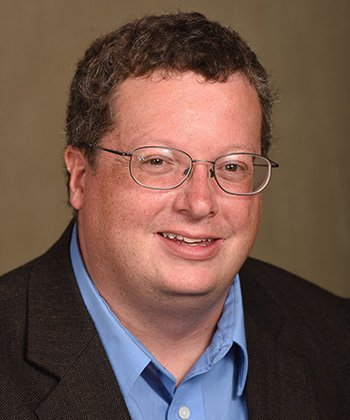The State Library of Ohio turned to a team of BW applied mathematics students to analyze the best method for transporting millions of books around the state each year.

Access matters to the book lovers and scholars who count on Ohio's network of public and academic libraries to deliver the reading materials they want and need in a timely fashion.
With a collective library catalog of more than 38 million items, including scholarly books, periodicals, maps, music scores and audiovisual materials, spread out from Cleveland to Cincinnati, what's the best way to get them from here to there?
To answer that question, the OhioLINK academic library consortium and the State Library of Ohio enlisted the help of Baldwin Wallace University pure and applied mathematics students.

The students were tasked with examining the cost-effectiveness of the statewide book delivery system used to transport some six million books between libraries around the state each year.
The research was part of a senior capstone project led by Dr. Brent Strunk, professor and chair of BW's Department of Mathematics.
"We're always looking for opportunities to give our students real-world opportunities to work to apply their quantitative skills," Strunk explained for an OhioLINK article highlighting the project.
"We like to have a senior project that is outward facing so students can learn how to communicate their work process and results with those who are not math-oriented," he added. In this case, that included creating data visualizations and translating their analytical processes.
Up front, students built a mathematical model to compare the efficiency and cost of the current courier, Priority Dispatch, to a possible alternative to service the state's shared lending system, the U.S. Postal Service's Media Mail.
At the end of the study, which was spread over two semesters, the students' research demonstrated that the current courier system, which delivers materials from library to library in 3-5 days, was the most cost-effective option.
"We were able to give a 'clean bill of health.' Everything was working really great," Strunk says.
OhioLINK Executive Director Amy Pawlowski adds, "We are very pleased to have demonstrated that our current approach for the academic and public libraries' statewide lending service provides significant savings for the state."

For the BW mathematics students and their client, the project was a win-win experience.
Parker Stevens '23 recalls, "There is only so much you can learn in a classroom, but this project allowed me to see how the information I learn in classes can translate to the real world. I was also able to strengthen my abilities in programs such as Excel and R."
"Just working closely with the organization was something completely different; it was nerve-racking but exciting," Kailin Breedlove '23 told OhioLINK. "It's a big organization, and you want to make sure you are doing everything well for them."
Ohio's State Librarian, Wendy Knapp, concludes, "Working with the students was not only a great way to contribute to their education but also a good opportunity for a third-party analysis of the courier service cost-effectiveness."